AMX DGX1600-ENC Handleiding
AMX
Niet gecategoriseerd
DGX1600-ENC
Bekijk gratis de handleiding van AMX DGX1600-ENC (2 pagina’s), behorend tot de categorie Niet gecategoriseerd. Deze gids werd als nuttig beoordeeld door 58 mensen en kreeg gemiddeld 4.9 sterren uit 29.5 reviews. Heb je een vraag over AMX DGX1600-ENC of wil je andere gebruikers van dit product iets vragen? Stel een vraag
Pagina 1/2

QUICK START GUIDE
DXLink™ Twisted Pair Transmitter/Receiver
Overview
The DXLink Multi-Format TX and HDMI RX Modules transmit HDMI, audio, and control
over twisted pair cable. The TX also has an analog video input. DXLink Modules can be
set up in one of three ways:
• Endpoint Mode (Switcher) – connect one or more to a switcher with an integrated
Master.
• Endpoint Mode (Standalone) – connect TX/RX pair directly to each other with one
connected to a NetLinx Central Controller via LAN or directly to Controller.
• Extender Mode (Standalone) – connect TX/RX pair directly to each other.
These Modules support InstaGate Pro® and SmartScale® Technology.
The Hardware Reference Manual – DXLink Twisted Pair Transmitters/Receiver contains
complete documentation (including full specifications and supported input and output
resolutions); for details, see www.amx.com .
System Setup
The Multi-Format TX and the RX work with a switcher that supports DXLink Technology
for transmission of HDMI (or with a Central Controller) or as a stand-alone pair. The
Transmitter receives an HDMI signal (or analog video on a Multi-Format TX) and
embedded audio from the source. Both the video and embedded audio are transported
over twisted pair cable to a DXLink Input Board (or connector). The signal is routed via
the DXLink Output Board (or connector) to an RX. On the Transmitter, stereo audio or
digital audio connections are provided as supplemental audio inputs. The RX also
provides a stereo audio output. Both the Transmitter and the Receiver support RS-232
for serial data transfer, USB, IR, and Ethernet.
DIP Switch Toggles – Default OFF (for Auto-setup, see next page)
Before installing the units, find the scenario you are using in the table below and set the
DIP switch toggles accordingly. Toggle #4 is reserved for future functionality.
For standalone pair upgrades, set Toggles #1-2-3 to ON and connect one unit to Master.
* Connect ICS LAN port of DXLink unit to network device (e.g., laptop, IP controlled
projector, ICSLan Device). In standalone setup, connect ICS LAN port of other DXLink
unit to network.
** In standalone setup using NetLinx control of DXLink serial/IR ports, only one of the
DXLink units should be connected to network (the unit with #1 Toggle enabled).
Mounting Options (Rack Trays and Mounting Brackets)
For details on the four versatile mounting kit options for V Style modules (rack tray, rack
tray with fill plates, surface mount, and pole mount), see www.amx.com .
IMPORTANT: When mounting under a surface, the module should be mounted upright
and lowered in the mounting bracket slots to provide an airflow gap between the surface
and the vent holes. If not using V Style brackets, be sure to leave a gap between the top of
the unit and the surface for heat to escape.
Twisted Pair Cable Pinouts and RJ-45 LEDs
The DXLink and ICS LAN 10/100 ports both use twisted pair cable. FIG. 4 shows two
pinouts that can be used for either port. FIG. 5 shows the LEDs for each port.
Attaching Signal, Transport, and Control Cables
Important Twisted Pair Cabling Requirements and Recommendations:
• DXLink cable runs require shielded category cable (STP) of Cat6 (or better).
• DXLink twisted pair cable runs for DXLink equipment shall only be run within a
common building.*
• DXLink (RJ-45) connectors must not be used for connecting to a standard
Ethernet Network. The connector is used for signal transport.
• Do not create a network (Ethernet) loop. A network loop is created when the
enclosure and one or more of its DXLink Modules are connected to a common LAN
(or a standalone pair when both endpoints connect to the same network).
• DXLink delivers 10.2 Gb/s throughput over shielded category cable. Based on this
bandwidth requirement, we recommend following industry standard practices
designed for 10 Gigabit Ethernet when designing and installing the cable
infrastructure.
• The cables should be no longer than necessary to reach the end-points. We
recommend terminating the cable to the actual distance required rather than
leaving any excess cable in a service loop.
• For complete cable specifications, see the Hardware Reference Manual – DXLink
Twisted Pair Transmitters/Receiver.
* “Common building” is defined as: Where the walls of the structure(s) are physically
connected and the structure(s) share a single ground reference.
For more details and helpful cabling information, reference the white paper titled
“Cabling for Success with DXLink” available at www.amx.com or contact your AMX
representative.
Grounding
If the system is experiencing problems with delivery of DXLink signals to/from an Enova
DGX Digital Media Switcher or Enova DVX Solution, adding a ground wire from the
TX/RX to the switcher may improve performance. Technically this type of grounding is
only required when a DXLink Transmitter or Receiver is connected to an ungrounded
device, but this added grounding measure can be used at the discretion of the installer
(for instructions, see the product manual).
IMPORTANT: If one DXLink Transmitter or Receiver is grounded, any remaining
ungrounded units that are connected to the same board on an Enova DGX Switcher must
also be grounded.
FIG. 1 DXLINK TX AND RX AS ENDPOINTS WITH COMPATIBLE DXLINK EQUIPMENT
FIG. 2 DXLINK TX AND RX AS EXTENDER SOLUTION
COMMON SCENARIOS TOGGLES
Standalone Setup 1 - 2 - 3
AV signals only (plus serial/IR passthrough) OFF - OFF - OFF
AV with Ethernet passthrough to networked device (plus serial/IR
passthrough)*
ON - OFF - OFF
AV with NetLinx control of TX/RX unit and serial/IR ports** ON - ON - ON
AV with NetLinx control of TX/RX unit and serial/IR ports, plus Ethernet
passthrough to network device*
ON - ON - ON
Switcher Setup (TX/RX with Enova DGX/DVX /DGX 100 Series Switcher) 1 - 2 - 3
AV signals only OFF - OFF - OFF
AV with Ethernet passthrough to networked device* ON - OFF - OFF
AV with NetLinx control of TX/RX unit and serial/IR ports OFF - OFF - ON
AV with NetLinx control of TX/RX unit and serial/IR ports, plus Ethernet
passthrough to network device*
ON - OFF - ON
DXLink Enova DGX 16
Input Boards DXLink
Output Boards
DXLink Transmitter
Destination device
Source device DXLink Receiver
Twisted pair cable
Twisted pair cable
DXLink Transmitter
Source device
DXLink Receiver
Destination device
FIG. 3 DIP SWITCH TOGGLES ENABLE/DISABLE SPECIAL FUNCTIONALITY
FIG. 4 RJ-45 PINOUTS
FIG. 5 RJ-45 PORTS
Yellow LED
On - Speed status is 100 Mbps
Off- Speed status is 10 Mbps
Green LED
On - Link status is active
Off- Link status is not active
Green LED
On - Connection established
Off- Connection not established
Yellow LED
On - Authenticated HDCP
Flashing - Video active; no HDCP
Off- No Video
DXLink Port
ICS LAN 10/100 Port

© 2015 Harman. All rights reserved. SmartScale, NetLinx, Enova, AMX, AV FOR AN IT WORLD, and HARMAN, and their respective logos are
registered trademarks of HARMAN. Oracle, Java and any other company or brand name referenced may be trademarks/registered trademarks of
their respective companies.
AMX does not assume responsibility for errors or omissions. AMX also reserves the right to alter specifications without prior notice at any time.
The AMX Warranty and Return Policy and related documents can be viewed/downloaded at www.amx.com.
3000 RESEARCH DRIVE, RICHARDSON, TX 75082 AMX.com | 800.222.0193 | 469.624.8000 | +1.469.624.7400 | fax 469.624.7153
AMX (UK) LTD, AMX by HARMAN - Unit C, Auster Road, Clifton Moor, York, YO30 4GD United Kingdom • +44 1904-343-100 • www.amx.com/eu/
93-1010-300 REV: L
Last Revised: 12/15/2015
To attach signal, transport, and control cables to the Transmitter:
1. Set DIP switch toggles if necessary (for settings, see the previous page).
2. Attach HD-15 cable from source to Video In connector.
3. HDMI In – Attach an HDMI cable from the source to the HDMI In connector.*
4. DXLink connector – Attach a twisted pair cable to the DXLink output and to a
DXLink input connector on the switcher (or on the RX for a standalone pair).
5. Stereo Audio In jack (optional) – Insert analog audio cable from source.
6. Digital Audio In jack (optional) – Insert S/PDIF plug on digital audio cable from source.
7. ICS LAN10/100 port (optional) – Use to attach twisted pair cable to LAN.
* DVI cable can be used via a cable adapter; however, advanced audio support from
HDMI will not be available.
To attach signal, transport, and control cables to the Receiver:
1. Set DIP switch toggles if necessary (for settings, see previous page).
2. DXLink input connector – Attach a twisted pair cable from the DXLink output
connector on the switcher (or on a TX) to the DXLink input.
3. HDMI Out – Attach HDMI cable from this port to the destination.
4. Stereo Audio Out jack (optional) – Connect analog audio cable from port to
destination.
Applying Power
A desktop power supply is provided with each module. Power can be supplied to DXLink
Twisted Pair Modules by DXLink Power sourcing devices as follows:
• To a TX or RX module from an Enova DGX Switcher or PS-POE-AT-TC (FG423-84)
or PDXL-2 (FG1090-170).*
• To a TX module from a DVX-3156HD, DVX-3155HD, or DVX-2155HD.
• To an RX module from a DVX-2155HD, DVX-2150HD, or an SDX-501M-DX.
Power Budget: For TXs and/or RXs connected to an Enova DGX, use the Enova DGX
Configuration Tool (www.amx.com/enova) to determine power requirements of a
configuration and if any DXLink TXs or RXs should use the local power. The tool
contains instructions on how to use it.
* To use PS-POE-AT-TC or PDXL-2 as a power source, the TX requires firmware v1.2.40
(or later) and the RX v1.0.80 (or later).
NOTE: Local power takes precedence over DXLink power (via DXLink port) from switcher.
IMPORTANT: If a desktop power supply is used to power the unit, it must be the one
provided, which must not be altered in any way. AMX does not support use of any other
power supplies or PoE injectors as they may potentially damage the DXLink equipment.
To apply power to the Transmitter (or Receiver):
1. Plug the cord from the desktop power supply (provided) into the power jack on
rear of the TX (or RX) (2.1 mm DC jack for 12 V local power).
2. Plug the desktop power supply into an AC external power source. The Power LED
on the front of the TX (or RX) illuminates green, indicating a ready state.
This table shows LED states on initial power up. If not normal, check connections.
* At power up, the RX defaults to Auto. Press the Scaling button to change the mode.
DXLink Auto-setup with Enova DGX 100 Series Switchers
Auto-setup is the default for using DXLink Modules with Enova DGX 100 Series
Switchers. When all of the following conditions are met, the modules automatically go
into Auto-setup Mode and can communicate through the ICS LAN port with the
integrated Master via Telnet:
• Endpoints must be set to DHCP Mode (default) and use the NDP Master
connection mode (default).
• Endpoints must not be bound to a Master.
IMPORTANT: On the switcher, the ICS LAN port acts as a DHCP server (private LAN) and
the LAN 100/1000 port acts as a DHCP client (public LAN) with each port on a separate
network. In order to avoid a Network Loop, do not connect any device on the private
network to any branch on the public network.
IP Addressing Modes
DHCP Mode (enabled when #3 Toggle is flipped ON)
In DHCP Mode, the Module attempts to get a DHCP lease (consisting of an IP address,
gateway, and other network parameters). If the attempt fails, the Module configures
itself for a link-local address, but periodically re-tries DHCP and re-assigns the IP to a
valid DHCP grant if successful. At any time, if the Module determines that its IP address
has changed, it will disconnect and reconnect to the Master.
Static IP Mode (set with ID button or Telnet command)
With #3 Toggle set to ON, press ID for 10 seconds to assign address of 192.168.1.2 or
use a Telnet command to set unit to Static IP Mode (see the manual).
Enova DGX/DVX and DXLink IP Setup (systems without auto-setup)
The following procedure is intended to outline the steps necessary for network setup of
DXLink Twisted Pair TX and/or RX with an Enova DGX 8/16/32/64 or Enova DVX
switcher. These steps require familiarity with NetLinx Studio. If unfamiliar with NetLinx
Studio, complete instructions are included in the Hardware Reference Manual – DXLink
Twisted Pair Transmitters/Receiver.
To setup DXLink Module(s) with an Enova DGX 8/16/32/64 or Enova DVX:
1. Set the DIP switches on the DXLink Module(s).
2. Apply power to the DXLink Module(s).
3. Connect DXLink Module(s) to the Enova DGX or Enova DVX.
4. Optional – Configure a Static IP address (for each connected Module).
5. Configure the Device ID (for each connected Module).
6. Connect (Bind) the DXLink Module(s) to the Enova DGX or Enova DVX.
RS-232 Serial Data (Optional)
The 232 port label is relative to data flow. Data enters at RX label on the Transmitter, is
sent via a DXLink cable through the switcher, and leaves at TX label on Receiver. Flow is
vice versa from Receiver to Transmitter. Applies to all DXLink modules – wire RS-232
port for serial data transfer according to pinout above connectors (TXD-RXD-Ground).
IR Control (Optional)
The IR Receiver (FG-IR03) connects to the IR RX port on the Transmitter and the
IR Emitter (FG10-000-11) connects to the IR TX port on the Receiver or vice versa,
depending on the installation. The signal is sent via DXLink cable through the switcher.
When a Transmitter and Receiver are used as a standalone pair, IR control acts as a
passthrough.
USB Host and Keyboard/Mouse Ports (Rear)
If needed, the Host (USB-B) port on the TX and the K/M port (USB-A) on the RX provide
HID support for a keyboard, mouse, and HUB. For a list of supported HID devices
(keyboards and mice), see the Receiver’s product page at www.amx.com .
Program Port (Front)
This USB mini-B port on the Transmitter supports DGX Configuration Software for
programming a customer VGA EDID (for modules connected to an Enova DGX 100
Series Switcher, use the System Configuration interface; see the switcher’s manual).
ID Button (Front)
The ID button on the front can be used to toggle between static and DHCP IP
addressing, assign a device address, reset the factory defaults, and restore the factory
firmware image (for details, see the manual).
Additional Information Covered in Manual
For information on the following, see the Hardware Reference Manual – DXLink Twisted
Pair Transmitters/Receiver at www.amx.com :
• Audio precedence; pinouts for VGA, component, S-Video, and composite
• NetLinx control and programming commands; Telnet commands
• IR file transfers; upgrading firmware image; restoring factory default settings
Reference Documents
• Instruction Manual – Enova DGX 8/16/32/64 Digital Media Switchers
• Hardware Reference Manual – Enova DGX 100 Series Digital Media Switchers
• Instruction Manual – Enova DVX-315XHD/21XXHD All-in-One Presentation
Switchers
• White Paper: Cabling for Success with DXLink
• WebConsole & Programming Guide – NX-Series Controller
FIG. 6 ATTACH SIGNAL, TRANSPORT, AND CONTROL CABLES
FIG. 7 ATTACH SIGNAL, TRANSPORT, AND CONTROL CABLES ON DXLINK HDMI RECEIVER
INDICATOR LEDS NORMAL POWER UP INDICATES
Power Green Power is applied
Digital Video and Audio Green Video and HDMI embedded
audio are present
Multi-Format - C, Y/C
Y/PB/PR, RGB
RGBHV, RGBS
Green or Off
(only one of the three
can be green at a time)
Corresponding signal is
present
RX - Scaling: Bypass/Auto/Manual One green, two off Current scaling mode*
232 (serial) TX / 232 (serial) RX Red/Yellow Serial activity
NetLinx Link/Act Green (Blinking - #3
Toggle OFF)
Active LAN connection to
an AMX Network
NetLinx Status Green LAN activity
CEC OFF Not currently supported
USB Yellow Connected to device
HDMI In Ground screw
DXLink output
ICS LAN 10/100 port
Digital Audio In
Stereo Audio In
USB port
Video In (analog)
Product specificaties
| Merk: | AMX |
| Categorie: | Niet gecategoriseerd |
| Model: | DGX1600-ENC |
Heb je hulp nodig?
Als je hulp nodig hebt met AMX DGX1600-ENC stel dan hieronder een vraag en andere gebruikers zullen je antwoorden
Handleiding Niet gecategoriseerd AMX
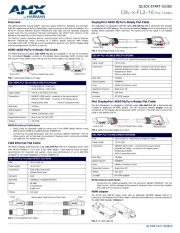
11 Juni 2025
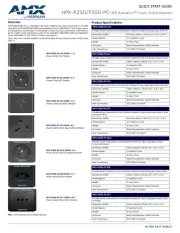
10 Juni 2025
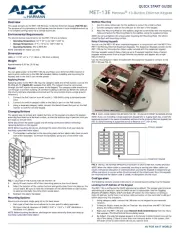
9 Juni 2025
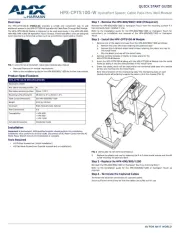
9 Juni 2025
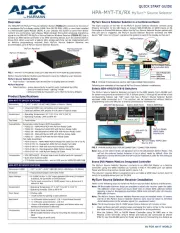
9 Juni 2025
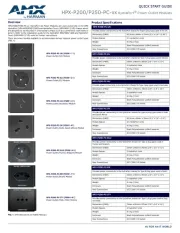
9 Juni 2025
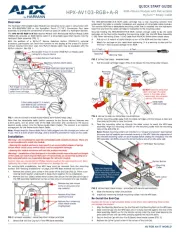
9 Juni 2025
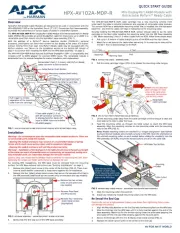
9 Juni 2025

9 Juni 2025

9 Juni 2025
Handleiding Niet gecategoriseerd
- Hager
- South Shore
- Lowell
- Seek Thermal
- Novo Nordisk
- Di4
- DivKid
- Leba
- Defender
- Gymrex
- MTD
- Icarus Blue
- Kidde
- Christmas Time
- D-Link
Nieuwste handleidingen voor Niet gecategoriseerd
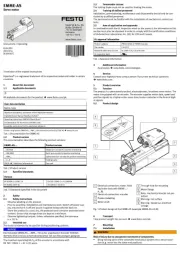
1 Augustus 2025
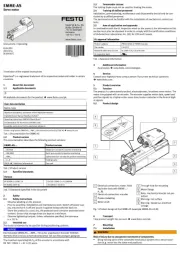
1 Augustus 2025
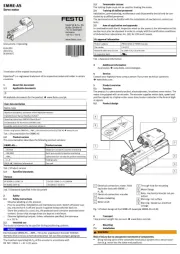
1 Augustus 2025

1 Augustus 2025
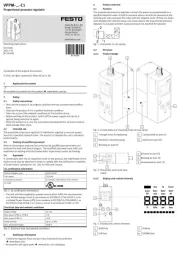
1 Augustus 2025
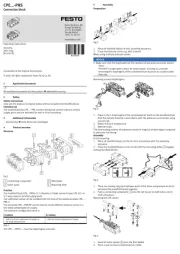
1 Augustus 2025
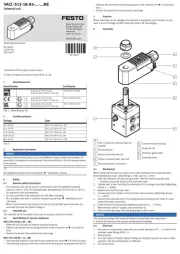
1 Augustus 2025
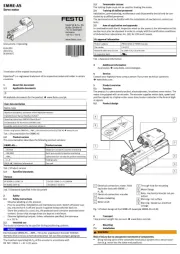
1 Augustus 2025
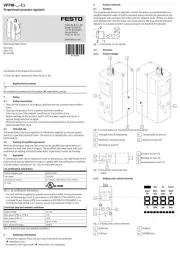
1 Augustus 2025
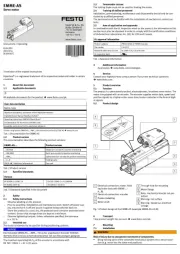
1 Augustus 2025